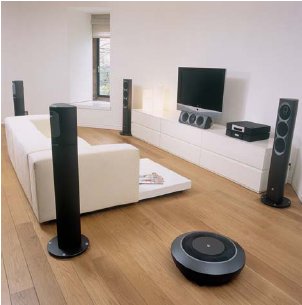Home Theatre System Setup
Some important points to remember while planning to setup a home theater system are mentioned below.
-
Locate the home theater on the ground floor.
-
Lighting should be adjustable and should not interfere with viewing.
-
Dampen sound in the room with absorbent surfaces - but leave a little ’brightness’.
What kind of room should you use for your home theater?
So you’ve got your widescreen TV, your DVD player, and your surround-sound system. But what kind of room will help you get the most from your home theater equipment? Here we discuss the basic features that will help maximize the performance of your equipment.
One of the main factors is whether the room will be used for purposes other than viewing movies and listening to music. Certain features (such as a very large projector or floor-to-ceiling carpeting) will not be practical if your home
 Your theater should be located on the ground floor of your home if possible.
Your theater should be located on the ground floor of your home if possible.
Lighting is a critical factor. The home theater room must be dark to get the most out of expensive televisions and projectors. But a totally dark room will cause eyestrain and fatigue. The ideal solution is a dimmer switch that allows lights to be lowered to optimum viewing level.
Lighting should be positioned so it does not interfere with either the screen or the viewers.
Don’t clutter the room with furniture as this will affect audio quality. If the room is being used for more than one purpose, portable furniture is a practical choice.
Your home theater will ideally be located away from the street to reduce interference from traffic noise and street lights. It should also be away from bedrooms, ensuring sleeping family members aren’t disturbed by movie-mad night owls.
You don’t want a room with lots of reflective surfaces. Concrete, timber, and tiles bounce sound around the room. This makes soundtracks too ’bright’ (the middle-high frequencies are too prominent) and restricts the dynamic range of your system.
You can reduce acoustic reflection by dampening the room with carpet, thick curtains, and acoustic paneling. But it’s not necessary to completely dampen the room. A little brightness will bring life to your sound system, particularly when listening to music.
If you are using the room for more than one purpose but you still want to use a projector and a screen, consider a roof-mounted projector and an automatically retractable screen. This will prevent your expensive equipment from cluttering the room when your home theater is not in use.